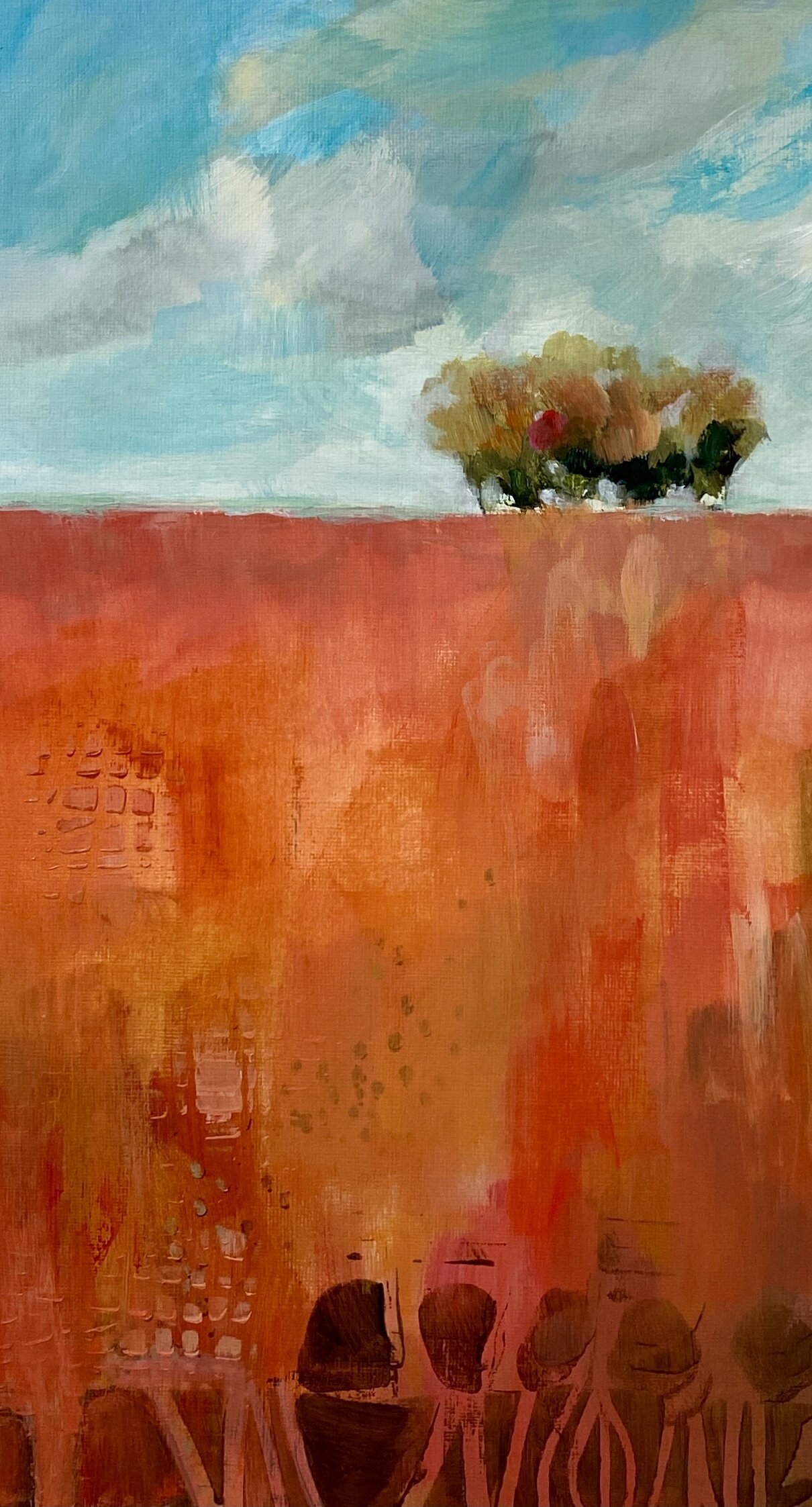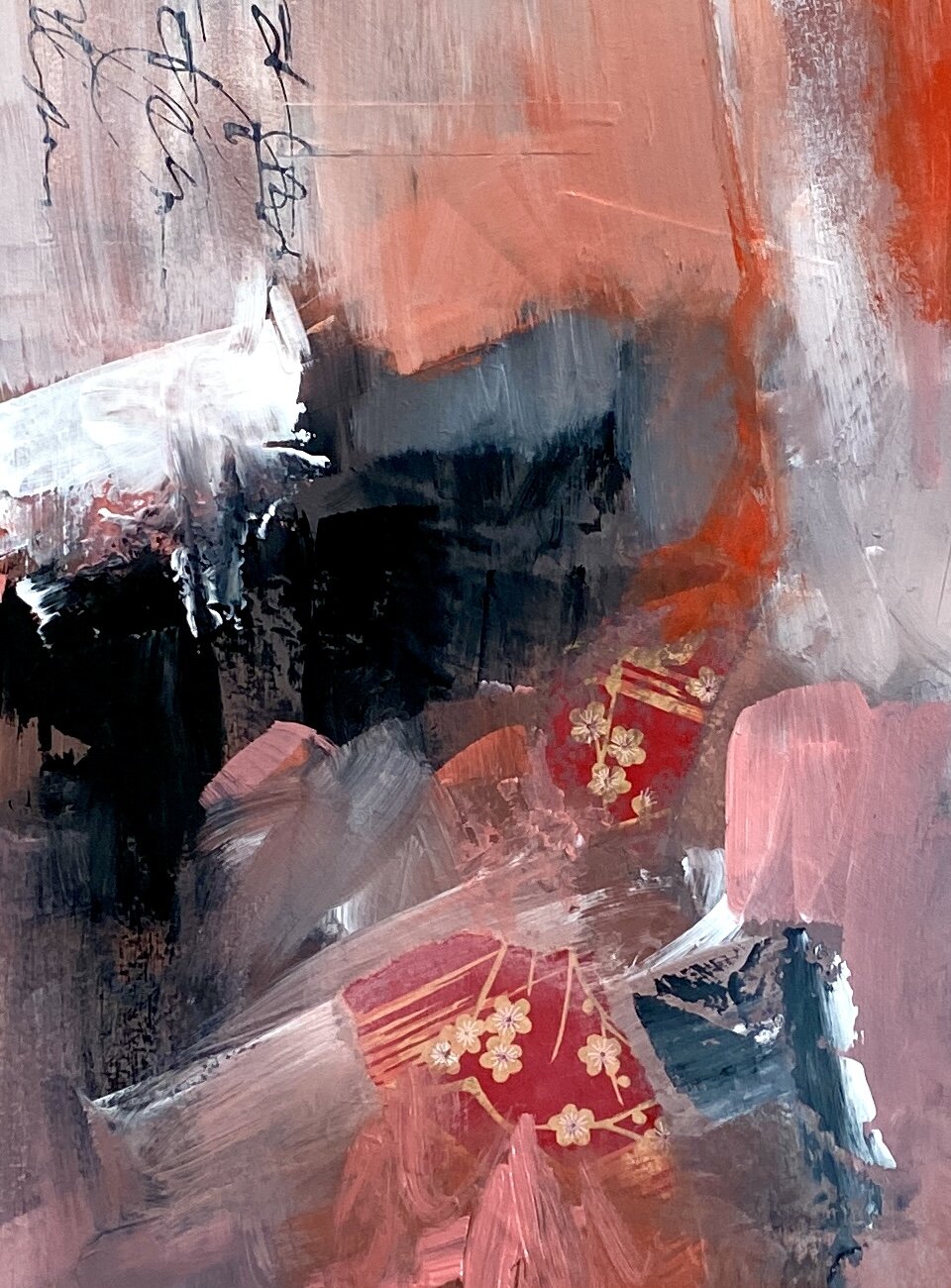Examples of Texture That’ll Inspire You
When I’m creating an abstract painting, I think of adding texture in the way that a chef garnishes a plate of food. While you might just have a sandwich on a plate when you’re eating lunch at home, in a restaurant you may find a twisted slice of orange next to the sandwich and perhaps a fancy toothpick sticking out of the sandwich. It sure distinguishes the meal!
How I Jazz up a Painting by Adding Texture
I don't know about you all but travel really inspires my art. A few years ago, my husband and I traveled to Botswana. I was greatly inspired by the landscapes, animals, and people of Botswana!
As you can see, the image is filled with about 80% land and 20% sky. The sky has trees poking into its space and puffy clouds that I was very pleased with. But the large field had nothing but variations of color (red, orange, and a little white). It needed a little bit of excitement and interest!
I used stenciling to add the illusion of texture on the bottom part of the painting. The stenciled shapes represent in an abstract way the tribal art that I observed in Botswana. Note that I used both dark and light paint for this texture. This contrast helps the texture to pop!
Once I’d added the texture, I felt like the painting was complete. The texture really elevated the painting!
A Dab of Texture Will Do the Trick
You’ve heard the phrase “A dab’ll do ya”—meaning a tiny bit is all you need. Adding texture to a painting is like that: Often, you might only need a little to be effective, and too much can be counter-productive. With the Botswana painting, can you imagine if I’d added stenciling all over the lower 80% of the painting? It would have made for a less interesting painting, and the viewer’s eye would have nowhere to rest.
Here’s another example of a dab of texture:
This abstract painting focuses mostly on the interplay of red, black, and white (and some shades of those three colors mixed together). As I painted, I made sure to have a variety of values: the very dark area on the left side is counterbalanced with the pops of white. But I thought that adding texture would zhuzh things up a bit.
I collaged three bits of paper that feature gold flowers on a red background. While the red picks up the other areas of red in the piece, the gold provides excitement and interest. Also, the viewer’s eye enjoys the contrast of texture: The paper is a texture difference from the paint. Again, I kept myself restrained by only using three bits of paper. If I’d kept going, I’d lose the impact that I intended.
How Can You Use Texture?
Next time you create a painting, play with texture when you are 90% done with the piece. Pick one method of adding texture, and add it with purpose. Remember, if a chef adds too much garnish, we can’t see the food. Add a little texture to dazzle the viewer and top off a great painting.
What Do You Think?
What are your favorite ways to add texture to your paintings?
Do you have trouble reining yourself in when adding texture?
I’d love to hear about it in the comments.


